Optimizing a CO2 Car
The first project in my Engineering and Fabrication 2 class was to make a CO2-powered race car. My goal was to make the fastest CO2 car I could. My final car traveled the length of the track–20 meters–in 1.09s.
Design Goals:
I started this project with a list of what I wanted to achieve, as well as some notes on how to achieve it:
Overall goal: go fast
- Limited mainly by acceleration.
- Force is constant, lowering weight makes the car accelerate faster.
Friction equation: minimize normal force
- Is generating a lift force viable?
Where should the center of mass be?
- There is a force at the height of the CO2 canister. There are friction forces at both wheels, especially the rear wheel.
- It is likely that the CO2 canister will cause the car to pitch down, increasing friction.
- Raising CG will increase the moment of inertia at the wheels and reduce the torque around the CG produced by the tangential component of the thrust force
- Generating a lift force at the front of the car while remaining more neutral at the rear could help
- Raising CG could also help with stability depending on axle vs eyelet positions
Aerodynamics - second priority to weight
- Minimize vortices coming off the top of the car
- Ground effect relevant? Bernoulli equation?
- Taper the rear of the car
- Laminar flow is less noisy
- Use the stream coming off the end of the car to reduce vortices at the back
Initial Designs:
I used this online fluid simulator to test a few initial designs. I ended up not using any of these because I found minimizing weight to be a more effective goal.
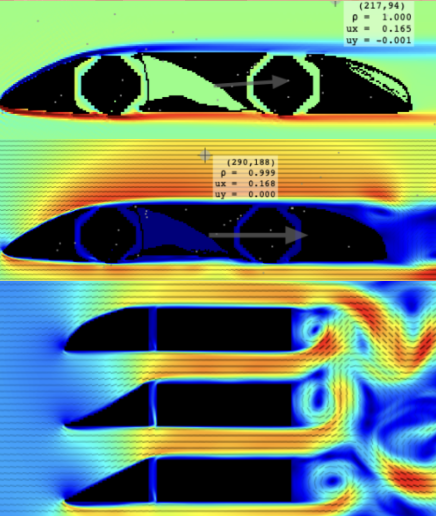
About three weeks in to the design challenge, my teacher clarified that any car that finished not on its wheels would be automatically disqualified. Now I had to pursue stability first, then weight, and then try and gain minor aerodynamic improvements.
Component Iterations
I designed my car quickly, then realized some issues throughout the manufacturing process.
Wheel Design
There were some restrictions on the wheel geometry, mainly the diameter and contact patch.

I designed the wheels to be lightweight, using the minimum diameter and width. If the wheels were to slide, I wanted to minimize the friction, so I printed the wheels horizontally. I added fillets to improve strength
Side Pods/Wheel Placement
Another rule was that there could be no material in the 60 degree arc over the wheel axle. I modeled what this would look like in a Fusion sketch, and used it to design the front wing and wide pods. There were other rules governing the wheel placement and car length, which this sketch helped me follow.
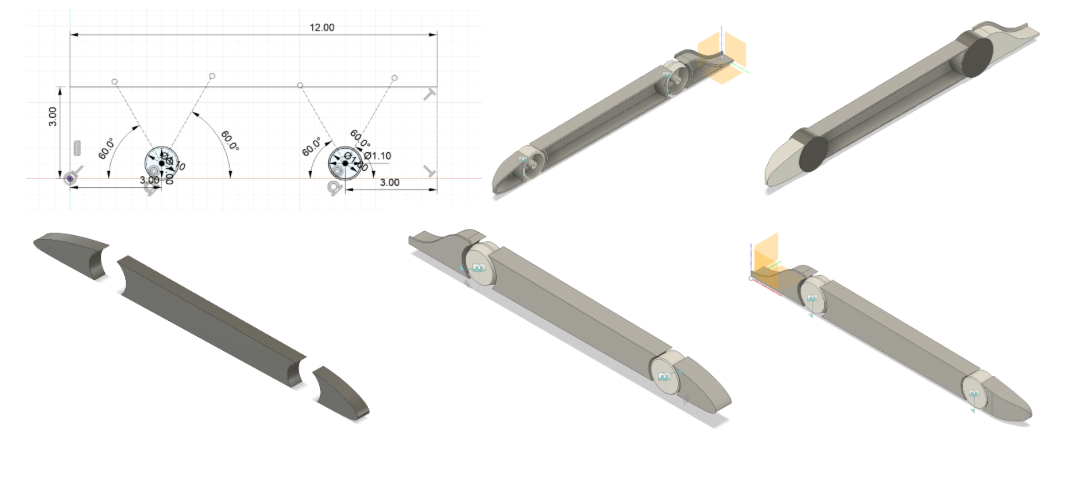
Center Body Design
I foolishly started with the Fusion 360 Generative Design feature, which produced some obviously questionable designs. I moved to using a T-Spline (form) body, and then cutting out holes and mounts for the side pods, front wing, and clearance for the wheels. I planned to drill holes in the bottom to mount steel eyelets.

Here is the cross section of the full assembly going through the wheels.
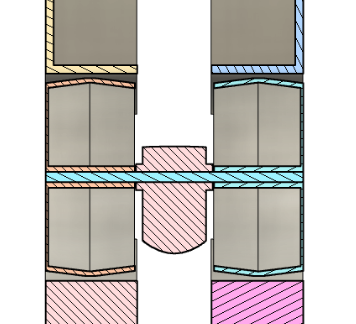
Manufacturing
I printed around four full assemblies. The first three fell apart. I cut a 0.001” plus sign into the back of the car to provide a more custom “infill.”

I printed the car body with 5% infill, one perimeter, and “alternate extra wall”. This provided a very light and strong enough car.
The placement of the eyelet lifted the front wheels off of the ground, further minimizing friction.
The car was heavier than I wanted with the front wing attached, so I removed all of the side pods.
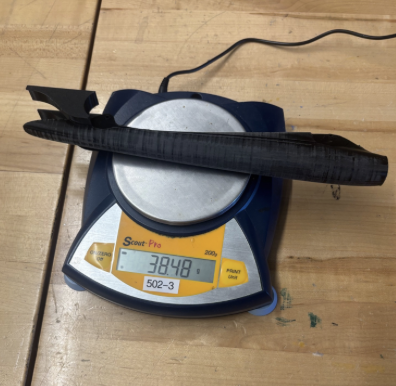
The wheels printed in a different color, and (unrelated) heavier than I wanted. I opted to remove the front wing but keep the heavy wheels to improve durability.
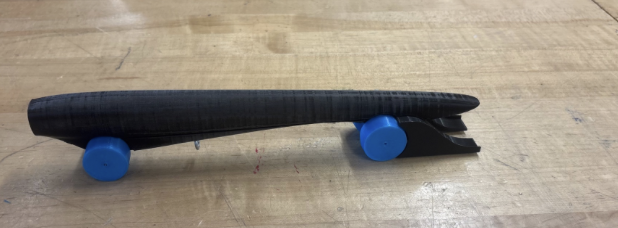
The final car was a little bit heavy–45g is the minimum. My closest competition was about 65-70g, so I decided to call it good enough.
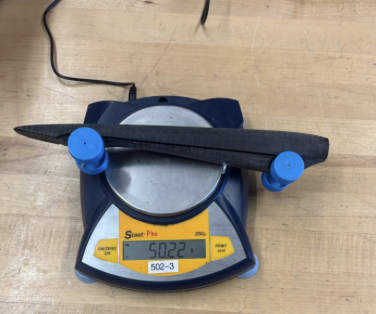
My car was quite stable, likely due to the eyelet placement. I believe that my rear eyelet held the back of the car to the ground, while the front eyelet held the front of the car off the ground, reducing friction, counteracting the torque/downward pitch I mentioned earlier, and holding the car to the track.
My car was by far the fastest in the class (approx 0.3s faster than anyone else) and did not flip until the final round.